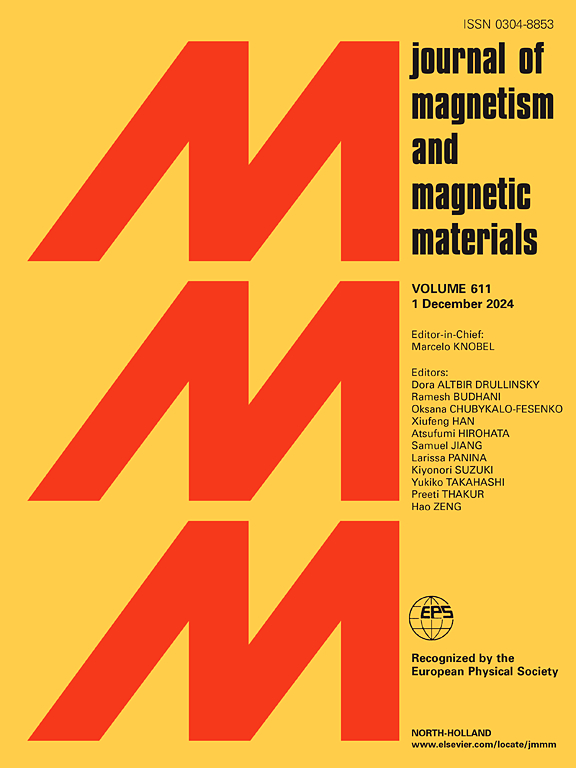Edge-potential induced skyrmion pinning and radial deformations under varying non-adiabatic spin torques
IF 2.5
3区 材料科学
Q3 MATERIALS SCIENCE, MULTIDISCIPLINARY
引用次数: 0
Abstract
Magnetic skyrmions are non-trivial topological spin textures that garnered intensive research attention due to their futuristic potential applications under their low-current-driven dynamics at the nano-length scale. Skyrmions-based racetrack memory devices where data can be embedded using skyrmions is a promising information storage technology. This makes the exploration of skyrmion transport properties on a racetrack under the influence of potential parameters is crucial for the designing of these next-generation energy-efficient memory devices. A systematic analysis of the influence of non-adiabatic spin torques and other key material parameters on skyrmion motion is presented using micromagnetic simulations. Skyrmions size-dependent dynamics in response to the edge potential under constant current density for Néel-type skyrmions are investigated. The theoretical frameworks indicate that smaller skyrmions drift off to a larger distance in the transverse direction owing to their smaller radius and smaller edge repulsion, eventually saturating with variation in their radius depending on the non-adiabatic torque coefficient. The smaller skyrmion shows undeformed stabilized states expelled at the edges with the increased difference in Gilbert damping (α) and non-adiabatic torque coefficient (β). The results also indicate a non-uniform distortion in the case of smaller skyrmions, deviating from their initial circular configuration to elliptical edge states while larger stabilized skyrmion states preserve their circular symmetry. We further discuss the influence of spin–orbit torques and interfacial spin-transfer torques on the skyrmion motion. These results provide a comprehensive understanding of the skyrmion pinning characteristics under the balancing act of Magnus force and skyrmion-edge repulsion.
求助全文
约1分钟内获得全文
求助全文
来源期刊

Journal of Magnetism and Magnetic Materials
物理-材料科学:综合
CiteScore
5.30
自引率
11.10%
发文量
1149
审稿时长
59 days
期刊介绍:
The Journal of Magnetism and Magnetic Materials provides an important forum for the disclosure and discussion of original contributions covering the whole spectrum of topics, from basic magnetism to the technology and applications of magnetic materials. The journal encourages greater interaction between the basic and applied sub-disciplines of magnetism with comprehensive review articles, in addition to full-length contributions. In addition, other categories of contributions are welcome, including Critical Focused issues, Current Perspectives and Outreach to the General Public.
Main Categories:
Full-length articles:
Technically original research documents that report results of value to the communities that comprise the journal audience. The link between chemical, structural and microstructural properties on the one hand and magnetic properties on the other hand are encouraged.
In addition to general topics covering all areas of magnetism and magnetic materials, the full-length articles also include three sub-sections, focusing on Nanomagnetism, Spintronics and Applications.
The sub-section on Nanomagnetism contains articles on magnetic nanoparticles, nanowires, thin films, 2D materials and other nanoscale magnetic materials and their applications.
The sub-section on Spintronics contains articles on magnetoresistance, magnetoimpedance, magneto-optical phenomena, Micro-Electro-Mechanical Systems (MEMS), and other topics related to spin current control and magneto-transport phenomena. The sub-section on Applications display papers that focus on applications of magnetic materials. The applications need to show a connection to magnetism.
Review articles:
Review articles organize, clarify, and summarize existing major works in the areas covered by the Journal and provide comprehensive citations to the full spectrum of relevant literature.
 求助内容:
求助内容: 应助结果提醒方式:
应助结果提醒方式:


